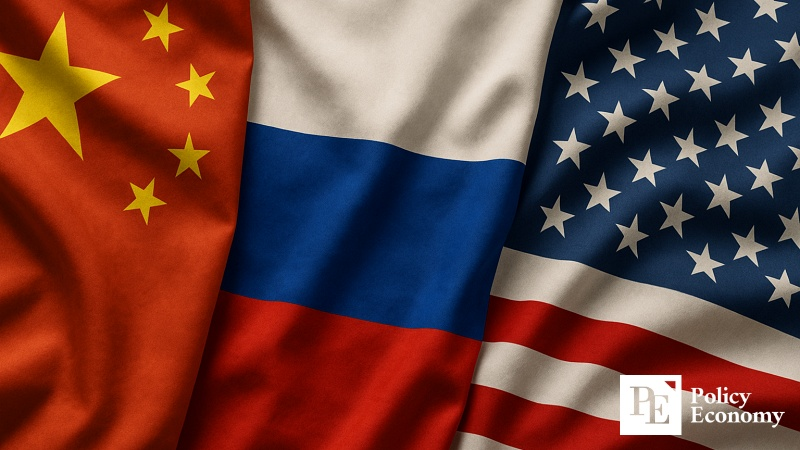China Declares Break from U.S. Energy, While U.S.–Russia Talks Hint at a Reordering of Global Markets
Input
Modified
Supply diversification intensifies U.S.–China tensions
Washington turns to allies to offset lost exports
Conciliatory signals from U.S. and Russia raise prospects for cooperation

The trade dispute between the United States and China is now spilling into the energy sector. Beijing has turned to cheap Russian supplies to cut costs and secure stability, while Washington, having seen exports to China collapse, has leaned on allies such as South Korea and Europe to absorb excess volumes and cushion the short-term shock. Still, losing China—the world’s largest energy importer—represents a heavy blow for the U.S. As the Trump administration hints at potential cooperation with Moscow, speculation is mounting that the global energy order could be reshaped.
Trade conflict spreads to energy
According to Chinese outlet Guancha, citing customs data on the 25th, China’s June imports of three key U.S. energy products—coal, crude oil, and liquefied natural gas (LNG)—had effectively fallen to “zero,” with not a single barrel of crude imported. It was the first time in three years that the world’s top crude buyer took in no U.S. oil, underscoring how bilateral tensions have now materialized in energy trade.
The collapse in LNG flows has been especially stark. The Financial Times reported that since a 69,000-ton LNG cargo departed Corpus Christi, Texas, in February and arrived in Fujian province, China has not received a single U.S. LNG shipment for more than ten weeks. Beijing first imposed an additional 15 percent tariff on U.S. LNG, later raising it to 49 percent—effectively stripping the trade of economic viability.
Russia has been the chief beneficiary. Data from CEIC shows Chinese imports of Russian crude in July were up 16.8 percent year-on-year, while pipeline gas flows from Russia and Central Asia rose 4.8 percent. At the same time, China increased domestic natural gas production by 7.6 percent over the past year, further strengthening its buffer against external shocks. This “U.S. LNG down, Russian crude and pipelines up” formula provides a quick, stable, and cost-effective solution for China’s industrial and power generation needs.
But the strategy is hardly a long-term fix. Greater reliance on a single supplier increases exposure to sanctions and geopolitical shifts. A sudden change in Russia’s stance could cut supply capacity and trigger price rebounds. Analysts warn that without careful risk management, China’s short-term cost savings could be reversed by sharp price spikes and supply disruptions, leaving its energy security vulnerable to political decision-making beyond market dynamics.
U.S. energy surplus hits $43 billion in H1
The sharpest blow has fallen on the U.S. shale sector. Since 2019, America has ranked alongside Qatar and Australia as one of the world’s top three LNG exporters, with China once a top-three buyer importing more than 60 billion cubic meters annually. This year, however, shipments to China have collapsed to zero, cutting its share of total U.S. exports from 11 percent in 2023 to nothing in 2024.
Even so, total U.S. LNG exports rose 6.2 percent year-on-year to 58.4 million tons as of July, offset by higher sales to allies in South Korea, Japan, and the European Union. South Korea in particular signed a $100 billion energy purchase agreement with Washington last year, and in the first half of 2024 boosted imports of U.S. LNG by 28 percent compared with a year earlier, covering much of the gap left by China.
European demand has also climbed. Since the war in Ukraine, the EU has reduced reliance on Russian gas and leaned more heavily on U.S. LNG. Between January and July this year, EU imports of U.S. LNG hit a record 225 billion cubic meters. Despite higher costs, European buyers prioritized supply security, and Washington redirected shipments to meet the surge. As a result, the U.S. posted an energy trade surplus of $43 billion in the first half of 2024.
Still, the loss of China carries long-term costs. The International Energy Agency notes that China was the world’s largest LNG importer last year, at 110 million tons, and also bought over 500 million tons of crude. Exclusion from that market leaves U.S. producers without a critical source of stable demand. Investment has also been disrupted: new LNG terminals in Texas and Louisiana had been underpinned by Chinese long-term contracts, but with deals collapsing, fundraising has faltered. While Beijing reshapes its supply mix, Washington has been left tethered to a narrow band of friendly buyers.

U.S.–Russia signals raise prospect of market realignment
Russia, meanwhile, has emerged as the clear winner. In the first half of the year, Chinese imports of Russian crude hit a record 2.3 million barrels per day, lifting Moscow past Saudi Arabia as China’s largest supplier. Discounted barrels—reflecting the weight of Western sanctions—enabled Beijing to secure both savings and stability, while Russia concentrated its isolated export flows on China, deepening mutual dependence.
Yet Washington’s stance toward Moscow has softened. As recently as July, President Donald Trump had threatened 100 percent tariffs on imports of Russian crude. But after an early-August summit with President Vladimir Putin, he suggested cooperation was possible. Putin, for his part, quickly followed by saying Russia was in talks with the U.S. on cooperating in Alaska’s LNG sector. For Moscow, too, overdependence on China has become a risk, and a thaw with Washington could offer a path to market stabilization.
Analysts now point to U.S.–Russia relations as a potential game-changer in global energy. As China’s reliance on Russian supplies grows, so too does its geopolitical vulnerability. Should Washington and Moscow find common ground, Beijing’s bargaining position would weaken. The result is a global energy market entering a new phase, defined by twin axes: deepening U.S.–China conflict and tentative U.S.–Russia negotiation.





















